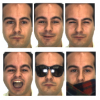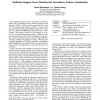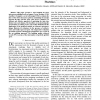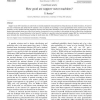93 search results - page 2 / 19 » Maximal Discrepancy for Support Vector Machines |
CVPR
2009
IEEE
15 years 16 days ago
2009
IEEE
Support Vector Machines (SVM) are one of the most useful
techniques in classification problems. One clear example
is face recognition. However, SVM cannot be applied
when the fe...
AAAI
2006
13 years 6 months ago
2006
of somewhat abstracting away from the literal physiological measurements of articulation that are so closely tied to the acoustic signal, and with some additional computational bur...
SAC
2009
ACM
14 years 2 days ago
2009
ACM
In active learning based music retrieval systems, providing multiple samples to the user for feedback is very necessary. In this paper, we present a new multi-samples selection st...
BIBE
2008
IEEE
13 years 5 months ago
2008
IEEE
This paper presents a novel method for DNA microarray gridding based on Support Vector Machine (SVM) classifiers. It employs a set of soft-margin SVMs to estimate the lines of the ...
NN
2000
Springer
13 years 5 months ago
2000
Springer
Support vector (SV) machines are useful tools to classify populations characterized by abrupt decreases in density functions. At least for one class of Gaussian data model the SV ...




